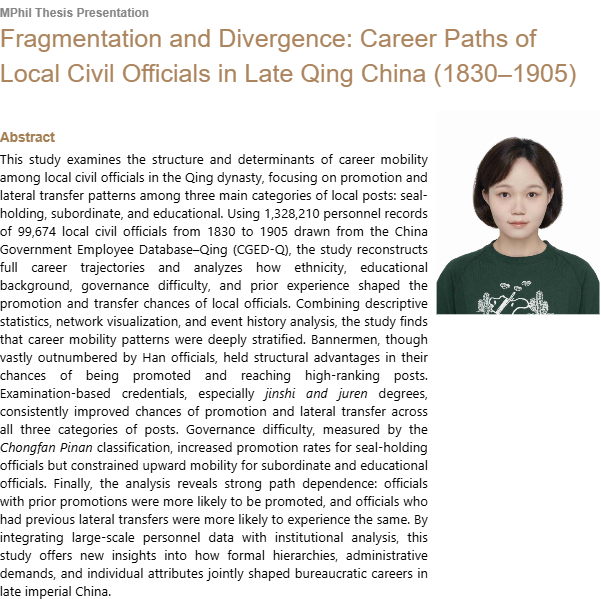Abstract
This study examines the structure and determinants of career mobility among local civil officials in the Qing dynasty, focusing on promotion and lateral transfer patterns among three main categories of local posts: seal-holding, subordinate, and educational. Using 1,328,210 personnel records of 99,674 local civil officials from 1830 to 1905 drawn from the China Government Employee Database–Qing (CGED-Q), the study reconstructs full career trajectories and analyzes how ethnicity, educational background, governance difficulty, and prior experience shaped the promotion and transfer chances of local officials. Combining descriptive statistics, network visualization, and event history analysis, the study finds that career mobility patterns were deeply stratified. Bannermen, though vastly outnumbered by Han officials, held structural advantages in their chances of being promoted and reaching high-ranking posts. Examination-based credentials, especially jinshi and juren degrees, consistently improved chances of promotion and lateral transfer across all three categories of posts. Governance difficulty, measured by the Chongfan Pinan classification, increased promotion rates for seal-holding officials but constrained upward mobility for subordinate and educational officials. Finally, the analysis reveals strong path dependence: officials with prior promotions were more likely to be promoted, and officials who had previous lateral transfers were more likely to experience the same. By integrating large-scale personnel data with institutional analysis, this study offers new insights into how formal hierarchies, administrative demands, and individual attributes jointly shaped bureaucratic careers in late imperial China.

